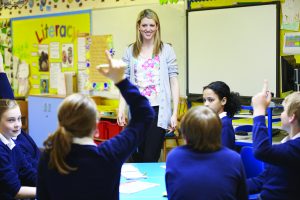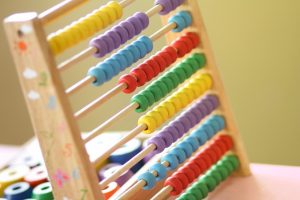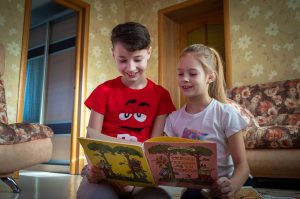
I chose to look through the Infinite Learning: Library as a Classroom for my final reflection blog. The reason why I chose Library as a Classroom is because I feel strongly about how similar librarians are to teachers. If you remember from my introduction, I was a teacher for six years. When I left the classroom, I had no idea where I’d end up but eventually found myself at the local public library in my town. There are so many similarities to teaching that I almost feel as though I have not left the classroom.
The common theme throughout all of the articles is that librarians are here to facilitate learning opportunities which I wholly believe. When I was hired, I was hired as a program specialist for the Youth Services Department specifically focusing on tweens. This age is categorized as ages 8-12. When I began to plan my programs, I wanted to focus on how I could educate people while simultaneously making sure that they were excited to come to the library.
I used to teach math and science so STEM is something that I am passionate about. I gave my boss a structured program proposal in January 2022 and she loved the way that I laid out my programs. Each month, I rotate through different school subjects in order to tap into different learning styles and interests. The first week of the month, I do programs that are based around crafting, art, and home economics. A majority of the time we are creating with different materials (paint, oil pastels, glue and beads, sewing, etc.) which helps tweens discover things that they are interested in or work on the skills they already have. In the article “Embracing Messy Learning”, the author states that he is slowly learning to embrace the struggles that students experience as they engage (Block, 2014). I found this so important because something that I have had to learn to do is back away and allow children to forge their own path. Sometimes, when making things creatively, we have to allow them the space so that they can create something that is authentically theirs.

The second week of the month, I design a program that is based around STEM. We have done things such as creating a switch, making soap from scratch, as well as creating robots with motors! When thinking about my time as a classroom teacher versus a librarian, there are some contrasts. Whenever I taught science in the classroom, there was always a curriculum that I had to follow. There was little room for creativity and free play. Designing these programs at my library gives me a lot of freedom and in turn, gives the children independence. Patrons often leave discussing how they have never done something like this before and how exciting it was for them.
The third week of the month is designed for families and we do a combination of crafting, reading, and STEM activities. These programs are large and I create stations. At these stations, there are different art activities like creating scenes (usually themed around an important holiday that month or theme) with stickers, a sensory bin, building blocks, etc. I began family night after 6 months of tween programming because families wanted similar activities for their younger and older children.

The last week of the month is designed for reading. I began it as a book club where we read one book and discussed it. I would bring snacks that were themed around the books and we would hold discussions. I noticed that within a few months of doing this, the tweens were becoming disinterested. I adapted it to fit the needs of the patrons and we now bring books that we are reading and talk about them. This has afforded tweens opportunities to make connections and it encourages their own reading without unintentionally making the program inaccessible if the book we chose was not on their level.
Overall, this entire unit had me reflecting on my own experiences with using the library as a classroom and my past experiences as a teacher. In the Huffpost, author Jordan Bookey talks about how libraries serve as a place that allows children to play free and reinforces that play is literacy (Bookey, 2015). I oftentimes find myself reflecting on how similar but different teaching and librarianship are. Similar because I work with children of a similar age and try to create programs that are aligned with their interests. Different because there is no grading papers, no parent contact, and no real measurement of ‘success’ other than feedback forms. Overall, I am happy to have my background experience as a teacher. I think that it has really helped me to transition to the library world.
References:
Block, J. (2014, January 7). Embracing messy learning. Edutopia. https://www.edutopia.org/blog/embracing-messy-learning-joshua-block
Bookey, J. L. (2017, December 7). 8 awesome ways libraries are making learning fun. HuffPost. https://www.huffpost.com/entry/8-awesome-ways-libraries_b_7157462

I love how you worded this; The common theme throughout all of the articles is that librarians are here to facilitate learning opportunities.
I was trying to write something similar but for some reason wasn’t quite getting it.
You seem to do a nice job with the programs that you have designed- Honestly your blog post could have been added to the readings for this module because it fits in perfectly.